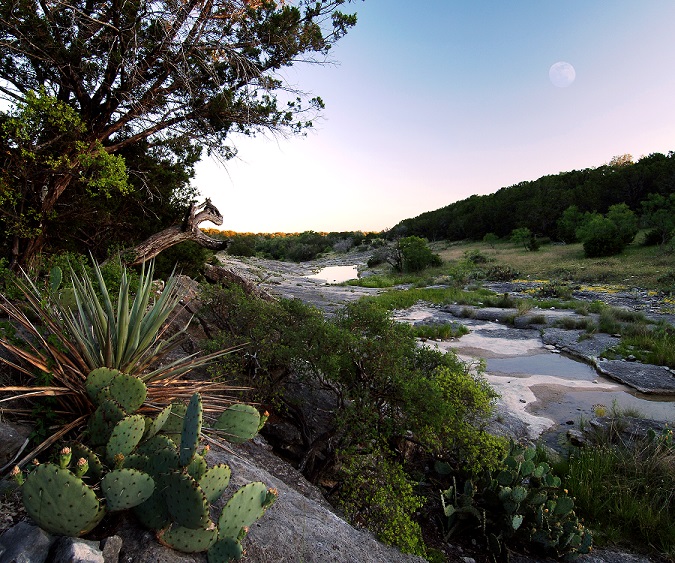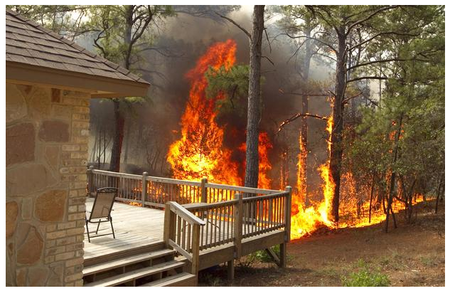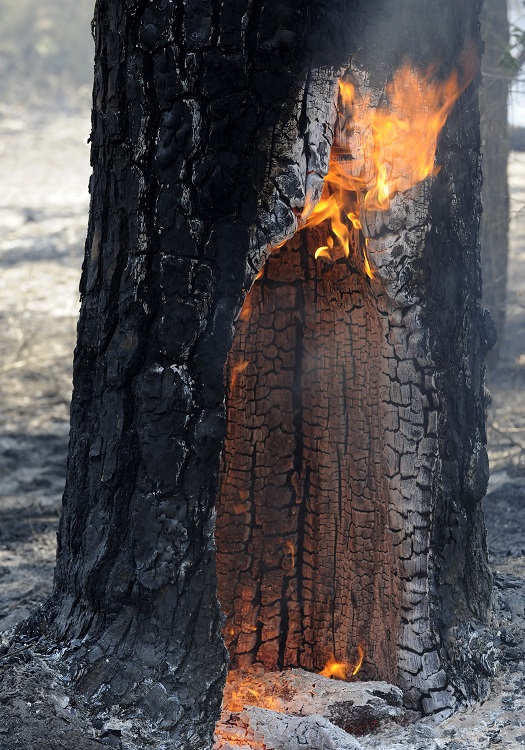August 22nd, 2013

Private Ranch in Texas
This is Passport to Texas
Ninety-five percent of land in Texas is in private hands, making landowners the key to long-term wildlife habitat conservation.
08 — We understand that in a private land state, we’re not going to make much of a dent in wildlife habitat conservation without our private land partners.
For the past 30 years, the private lands program at Parks and Wildlife has worked closely with landowners, providing free technical assistance for their long range land management goals. It’s another success story in the agency’s 50 year history. Linda Campbell oversees the program.
08—People can go to our website and find their local biologist, talk to them, and they can help you reach your wildlife management goals.
Through its Landowner Incentive Program, the agency provides funds to cost-share.
22 — Projects for landowners who want to enhance habitat for declining species, rare species – in certain targeted areas of the state. We also have funding for landowners who want to do work to enhance watersheds. We look at those as well, and we have a great website on that. So, people that are interested in financial incentives should certainly check out the landowner incentive program.
Find information about free technical assistance and the landowner incentive program on the Texas Parks and Wildlife website.
The Wildlife and Sport Fish Restoration program supports our series and provides funding for Private lands and Public Hunting programs.
For Texas Parks and Wildlife…I’m Cecilia Nasti.
Posted in Conservation, Land/Water Plan | Comments Off on 50th Anniversary: Working with Landowners
August 21st, 2013

Wildfire in Bastrop, Image Jay Jenner Austin American Statesman
This is Passport to Texas
Low hanging tree branches that hug the roof line of your home may provide shade, but they could put you and your property in danger during a wildfire.
11— The roof is the most vulnerable spot on your house; and plants that grow their branches down very close to or even touching the ground, and continue up to your roof, are really plants you want to avoid.
Mark Klym coordinates the Wildscapes program for Parks and Wildlife. He says homeowners living near wildlands are encouraged to use firewise landscaping techniques to reduce their home’s vulnerability to wildfires.
33— Firefighters prefer to see 30 feet of cleared ground around your home if possible; if you can’t give them 30 feet, give them as much as you can. That doesn’t mean no plants – it simply means being very selective with the plants that you have. Some of our wildflowers are very good at retaining their moisture; those are the plants that you want up close to your home. But anything that’s got an oily resin in it… anything that’s going to ignite very easily – dried grasses – you’ll want to avoid that. You also want to try and clean up the leaf litter around your home if you can. Because that will carry the fire to your door.
Find Mark Klym’s article on firewise landscaping in the October issue of Texas Parks and Wildlife magazine.
Support provided by Ram Trucks. Doing what’s right and good regardless of the degree of difficulty — takes guts. Those are the people who build Ram trucks. RAM.
For Texas Parks and Wildlife…I’m Cecilia Nasti.
Posted in TPW Mag | Comments Off on Firewise Landscapes: Defense Against Wildfires
August 20th, 2013

Pine burning in wildland fire
This is Passport to Texas
Homeowners in close proximity to wildlands are at greatest risk of property damage from wildfires. A firewise landscape won’t stop flames, but it could slow them long enough to allow families to escape safely.
13— That means selecting our plants and landscaping materials, as well as some of our outbuildings and structures associated with our home, in a way that will help reduce the probability of a wildfire having catastrophic results for us.
Mark Klym coordinates the Wildscapes program for Parks and Wildlife. He says what you plant on your property, and where you plant it, makes all the difference during a wildfire.
25— You definitely don’t want anything that’s highly explosive or that ignites very easily close to your home. Some examples would be cedar, or any of our holly plants – which a lot of people want right up against their house. And the firefighter’s nickname for holly is “green gas” – it’s very explosive. So, you want to avoid that type of plant around your home. You also want to avoid anything that might ignite at ground level and carry the fire to your roof.
Mark Klym’s wrote an article about firewise landscaping for the October issue of Texas Parks and Wildlife magazine.
Funding provided by Chevrolet, supporting outdoor recreation in Texas; because there’s life to be done.
For Texas parks and Wildlife …I’m Cecilia Nasti.
Posted in TPW Mag | 1 Comment »
August 19th, 2013

Sauer-Beckman Farm
This is Passport to Texas
For years, Earl Nottingham captured the beauty of nature still photographs for Texas Parks and Wildlife. He now works that same magic with video, as Texas Parks and Wildlife TV series producer Don Cash explains.
57— Earl is moving into the video realm now since every camera made has video and stills. It’s phenomenal what high quality video can be captured with a DSLR camera. It opens up a lot of creative opportunities for a traditional still photographer such as myself. One of the things Earl did was a video essay, if you will, at the Sauer Beckmann Farm in Stonewall. It was such a nice piece that we just had to run it on the show. I think that regardless of what type of camera you use to capture an image, all you’re really trying to do is tell a story visually. For a still photographer like Earl to make the transition from stills to video has got to be a little difficult, but he seems to pull it off just fine. Back in college, I minored in cinematography, but pursued a career in photography. So, I’m really enjoying the opportunity to now shoot some video with the advent of the DSLR. And, I get to use some of the very same film techniques I learned with the old 16mm movie camera.
The video essay on Saur-Beckmann Farm airs the week of August 18 on the Texas Parks and Wildlife PBS TV series.
Support provided by Ram Trucks. Doing what’s right and good regardless of the degree of difficulty — takes guts. Those are the people who build Ram trucks. RAM.
For Texas Parks and Wildlife…I’m Cecilia Nasti.
Posted in TPWD TV | Comments Off on TPW TV: Moving Pictures
August 16th, 2013

Outdoor Kids
This is Passport to Texas
Texas Parks and Wildlife offers a variety of enhancements for teachers and educators to use in and out of the classroom.
19— We offer outdoor skills training; we offer additions to curriculum – all kinds of supportive materials – to help people introduce youth to the outdoors and to outdoor skills so that they become more aware of their surroundings, enjoy the natural world, and feel connected to our natural resources.
Nancy Herron is Director of Outreach and Education. A new curriculum on aquatic ecosystems of Texas provides a template for understanding water, the living things that depend on it, and our future decisions about it.
31— Without a basic understanding of how our aquatic systems work, it’s going to be very difficult to make those tough decisions that are facing us, such as how much water we need to have in a stream? Isn’t that an unusual question? I mean, it’s not something that people normally would think about; how would you even understand how to approach that question? Our folks are going to be making a lot of tough decisions in the future as we balance the needs of people and the environment. And we need to have a good understanding of how the environment works to do that.
The electronic student and teacher guides for aquatic ecosystems of Texas will be available on the Texas Parks and Wildlife website, and partner website: the Meadows Center for Water and the Environment, and the Hart Research Institute.
The Sport Fish Restoration program supports our series and works increase fishing and boating opportunities in Texas.
For Texas Parks and Wildlife…I’m Cecilia Nasti.
Posted in Education | Comments Off on Back to School Week: Teach the Outdoors







 Passport to Texas is a
Passport to Texas is a  Passport to Texas is made available by:
Passport to Texas is made available by: